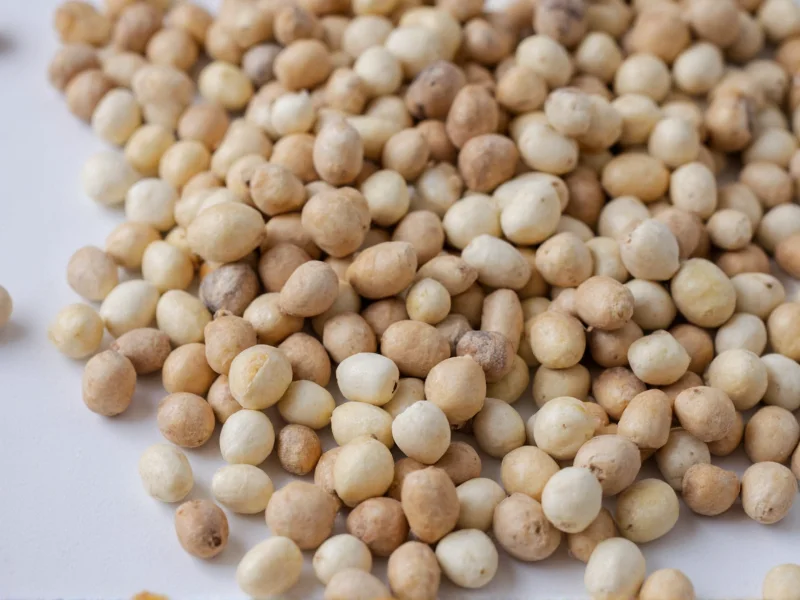When measuring peppercorn dimensions for culinary applications or understanding the metaphorical use in legal contracts, precise size information matters. This comprehensive guide explores the physical measurements of various peppercorn types, their practical implications in cooking, and clarifies the common confusion with the legal term ‘peppercorn rent.’
Understanding Peppercorn Measurements
Peppercorns are the dried berries of the Piper nigrum plant, and their size varies slightly based on variety, growing conditions, and processing methods. The standard measurement for whole peppercorns refers to their diameter, as they are roughly spherical.
Size Comparison Across Peppercorn Varieties
While all true peppercorns come from the same plant species, processing methods create different varieties with subtle size differences:
| Peppercorn Type | Average Diameter | Visual Comparison |
|---|---|---|
| Black Peppercorns | 4.5-5.5 mm (0.18-0.22 inches) | Slightly larger than a standard pencil lead |
| White Peppercorns | 4-5 mm (0.16-0.20 inches) | Similar to a coarse grain of sand |
| Green Peppercorns | 4-5 mm (0.16-0.20 inches) | About the size of a small lentil |
| Pink Peppercorns | 3.5-4.5 mm (0.14-0.18 inches) | Comparable to a poppy seed but rounder |
Why Peppercorn Size Matters in Cooking
The physical dimensions of peppercorns directly impact culinary applications. Professional chefs and home cooks need accurate peppercorn measurement in mm when following precise recipes. Larger peppercorns generally contain more essential oils, affecting both flavor intensity and grinding consistency.
When using a pepper mill, understanding how big is a peppercorn helps determine the appropriate grind setting. Coarse grinds (using larger peppercorn pieces) work well for steak crusts, while fine grinds (from smaller particles) suit delicate sauces. The standard peppercorn size comparison to everyday objects helps cooks visualize measurements without specialized tools.
Peppercorn Size and Grinding Efficiency
Grinder performance varies significantly based on peppercorn dimensions. High-quality mills accommodate the typical peppercorn diameter range of 4-6 mm. Cheaper grinders may struggle with larger peppercorns, resulting in inconsistent grinding or jamming.
For optimal results, select peppercorns with uniform size measurements. This ensures consistent grinding and prevents fines (overly ground particles) from mixing with larger chunks. When purchasing pre-ground pepper, remember that the original peppercorn size affects the final product's flavor profile and shelf life.
Clarifying the ‘Peppercorn Rent’ Misconception
Many searchers confuse physical peppercorn size with the legal term ‘peppercorn rent.’ In contract law, a ‘peppercorn’ represents a nominal consideration—something of minimal value that satisfies the legal requirement for consideration in a contract.
This metaphorical usage dates back to English common law, where a single peppercorn symbolized token payment. The actual physical size of peppercorns is irrelevant in this context; the term simply denotes a minimal, symbolic amount. Understanding this distinction prevents confusion between culinary measurements and legal terminology.
Practical Applications of Peppercorn Size Knowledge
Accurate peppercorn size information benefits various applications:
- Culinary precision: Following recipes that specify ‘whole peppercorns’ requires understanding standard peppercorn measurements
- Equipment selection: Choosing appropriate pepper mills based on typical peppercorn diameter
- Packaging standards: Commercial producers use precise size measurements for quality control
- Gardening: Home growers can assess pepper plant productivity by measuring harvested peppercorns
Selecting Peppercorns Based on Size
When purchasing peppercorns, examine them for uniformity in size measurements. High-quality peppercorns show consistent diameter within the 4-6 mm range. Avoid batches with significant size variation, as this indicates inconsistent drying or processing.
For specific culinary techniques, size selection matters. Larger peppercorns work best for pickling and whole-spice applications, while medium-sized peppercorns provide optimal grinding results. Understanding the exact peppercorn measurement in mm helps achieve desired culinary outcomes.











 浙公网安备
33010002000092号
浙公网安备
33010002000092号 浙B2-20120091-4
浙B2-20120091-4